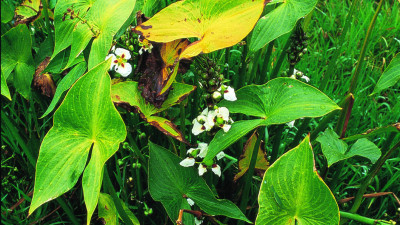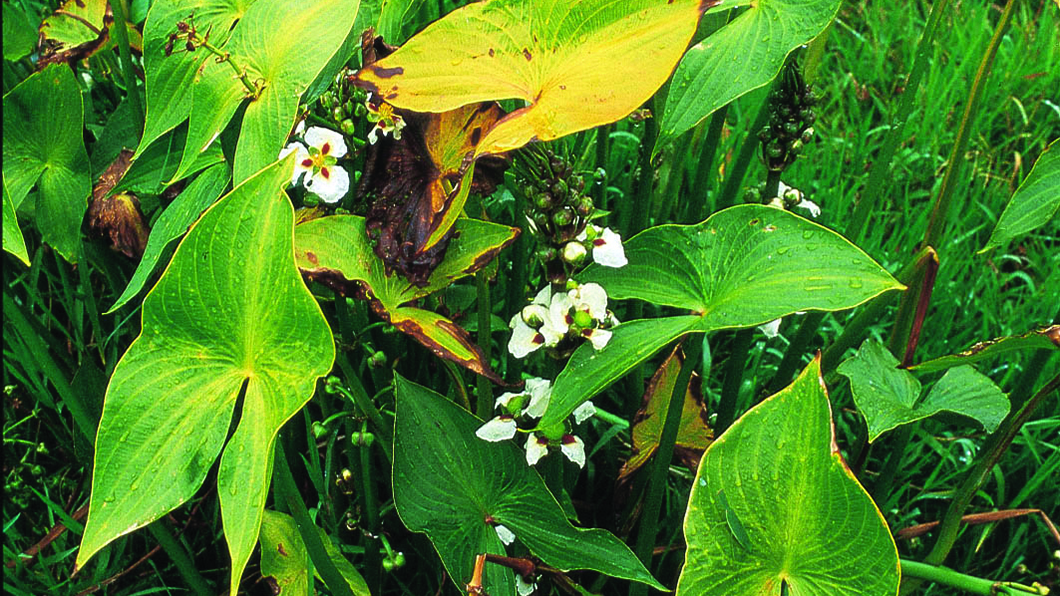| Management programme |
| Eradication. |
| Objectives |
| Reduce the level of infestation of Sagittaria within the Waikato region to zero density to prevent adverse effects and impact. |
| Impacts |
| Biodiversity, water quantity/quality, social and cultural wellbeing, amenity/recreation |
Originates from North America and was introduced to New Zealand as an ornamental pond and aquarium plant. Sagittaria is also known as arrowhead because of its arrow-shaped leaves.

What does it look like?
Size
Attractive, erect, perennial herb up to 1m tall (but can grow taller).
Stems
Wooden square stems, smooth or hairy.
Flowers
Numerous magenta flower spikes seen December to February.
Roots
Grows from extensive root system that is very dense and wooden.
Seeds
Seeds in autumn.
Where is it found?
- Sagittaria can be found in waterways and water margins, storm water and ornamental ponds. Risk areas include static or slow-moving fresh water.
- Sagittaria is spread by water dispersed seed, rhizomes and tubers, and also by deliberate planting.
Why is it a pest?
- Sagittaria can choke waterways, clog irrigation systems, encourage flooding, displace native plants and animals, and degrade fishing, swimming and other recreation opportunities.
- Very difficult to fully control due to the ability of the plant to regenerate from fragments and the extensive rhizome system.
How does it spread?
Seeds spread by water flow, livestock and possibly waterfowl, and diggers can spread rhizomes. Can also escape from ponds during flooding.
How do you get rid of it?
Sagittaria is exceedingly difficult to control. Please do not attempt to control it. Let us know if you think you have seen this plant or have it on your property by calling 0800 800 401 to report it to your local biosecurity pest plant officer.
More information
Publications
- The following publications are available for download or from Waikato Regional Council. Contact us to request a copy (freephone 0800 800 401).
Photo by Auckland Council





